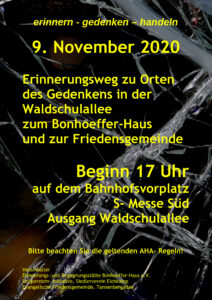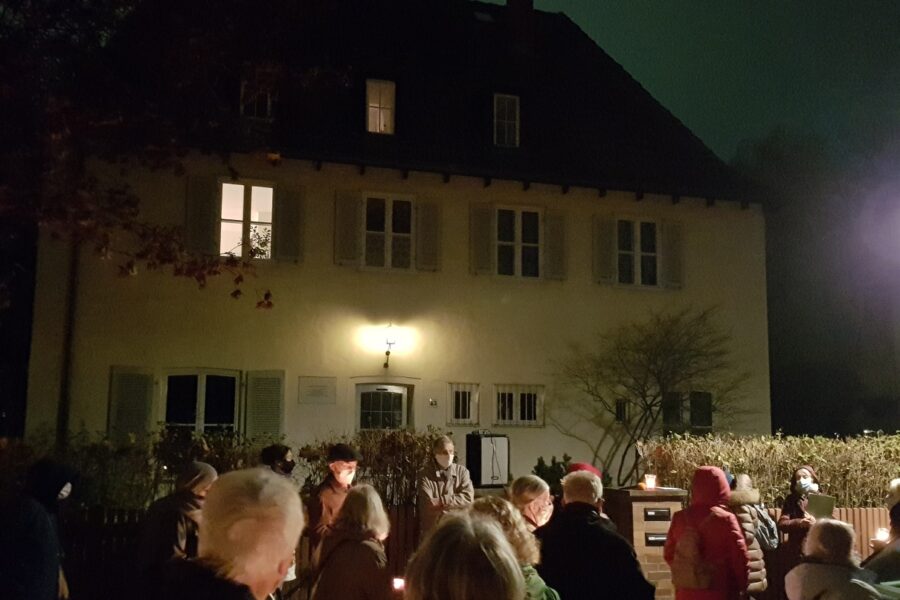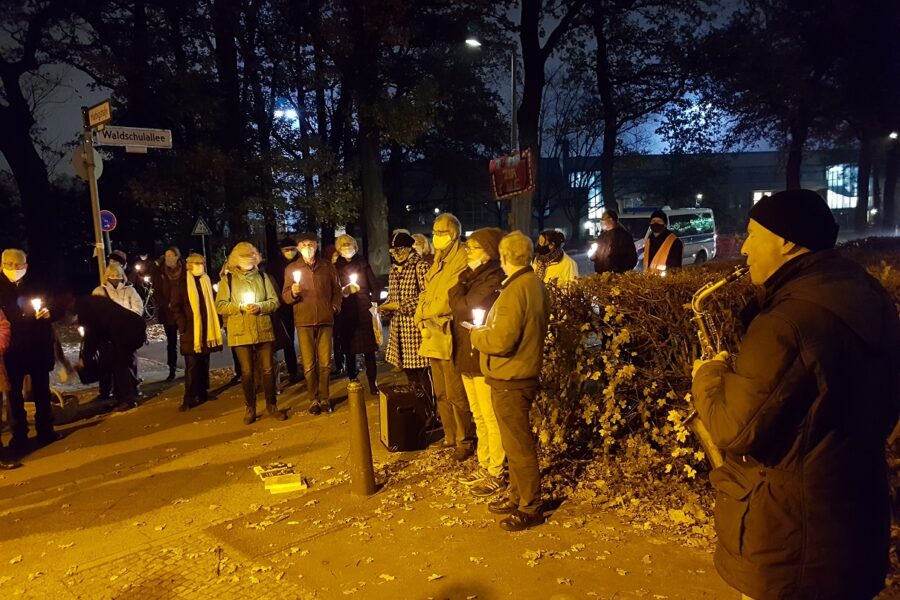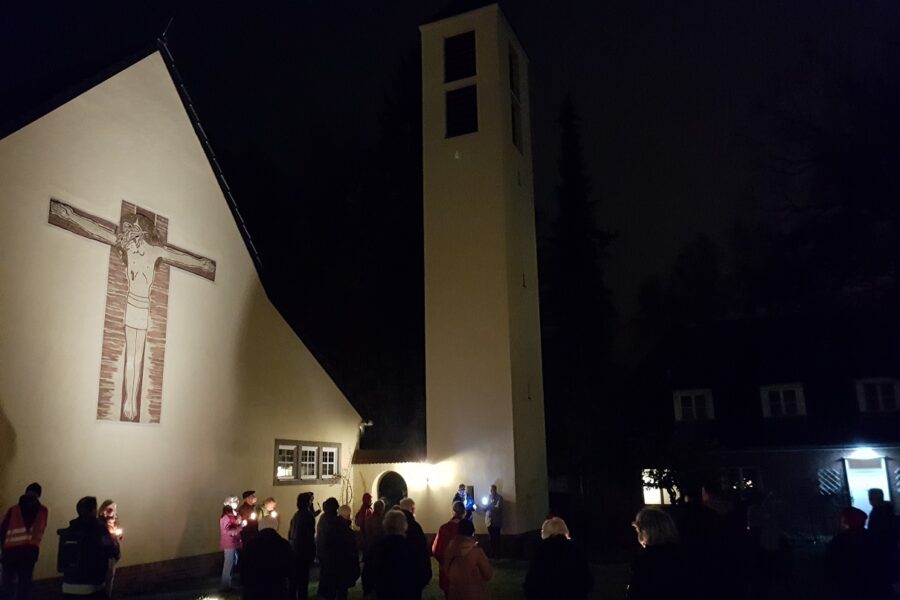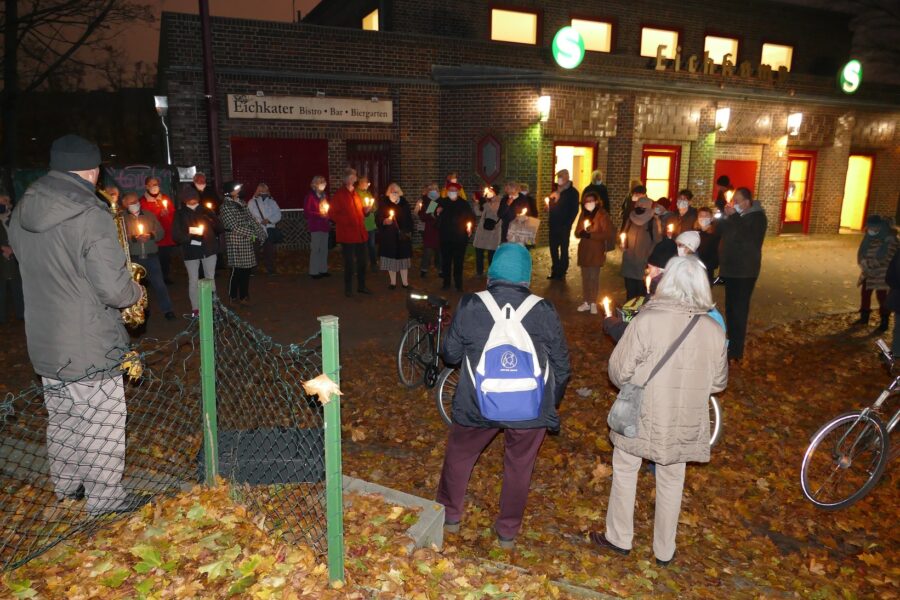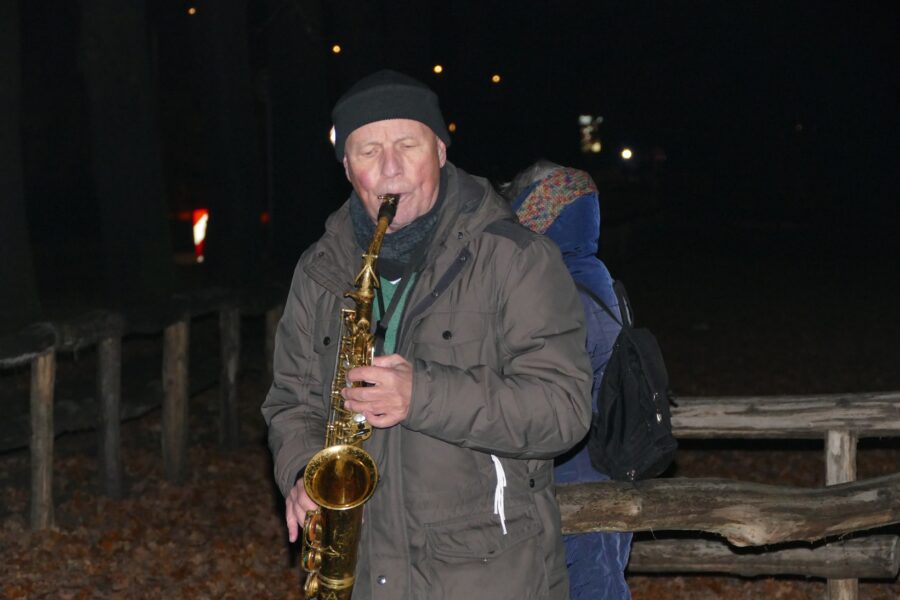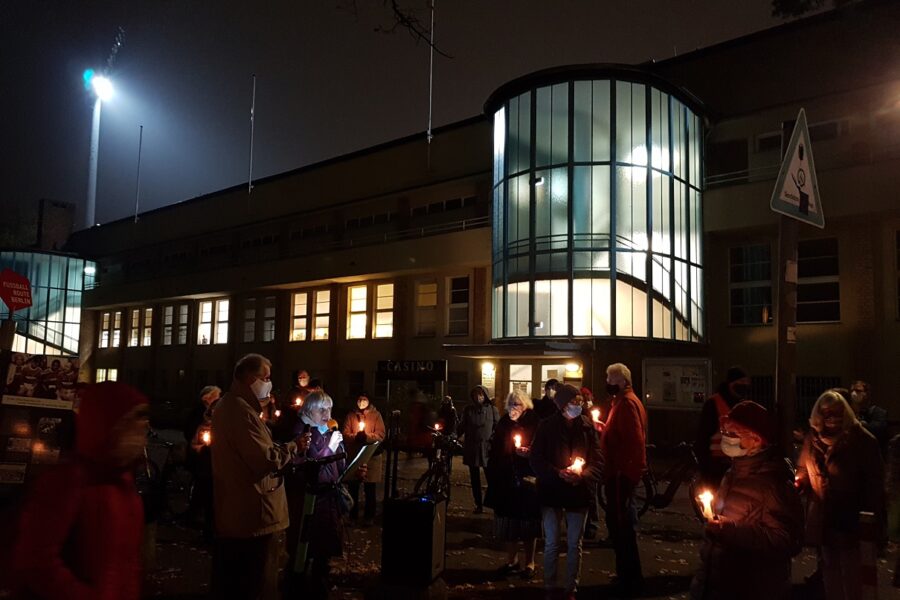Memorial and Place of Encounter Bonhoeffer-Haus Berlin
www.bonhoeffer-haus-berlin.de
EXAUDI: The Church of Aaron against the Church of Moses
– the Eternal Conflict in the Church of Christ
TEXT
DBW 12.472 ff., Sermon on Exodus 32:1-8, 15-16- 18-20-30-35 (The Golden Calf)
May 28, 1933, Kaiser-Wilhelm-Gedächtniskirche Berlin, on behalf of Gerhard Jacobi
The priest against the prophet, the church of the world against the church of faith, the church of Aaron against the church of Moses – this eternal conflict in the church of Christ and its resolu-tion, is what we are going to hear about today.
Moses and Aaron, two brothers from the same tribe, with the same blood and the same history, went part of the way side by side and then were torn apart – Moses, the first prophet, and Aa-ron, the first priest; Moses, the one called out by God, the one chosen without regard for his person, the man who was slow of tongue, the servant of God who lived only by listening to the word of his Lord; Aaron, the man with the purple robe and the sacred crown, the priest who had been consecrated and sanctified, who was supposed to keep the people worshipping God. And now in our story, we have Moses alone, way up on the terrifying mountain with the living god, between life and death with the thunder and lightning, called to receive the law of God’s cove-nant with God’s people – and down in the valley the Israelites with their priest in his purple robe, making sacrifices but estranged from God.
Why did Moses and Aaron have to go against each other? Why couldn’t they stand side by side and serve God together? Why are the church of Moses and the church of Aaron, the church of the Word and the church of the world, always breaking apart? The answer to this question is found in our text.
Moses is called by God to go up the mountain on behalf of his people. God wants to talk with him up there. The children of Israel know this; they know that Moses is standing up there on their behalf struggling, praying, suffering … But the church of Aaron, the worldly church, can-not wait; it is impatient. Where is Moses anyway? Why doesn’t he come back? We can’t see him anymore. Where is he with his God? “We do not know what has become of him:” Maybe he isn’t there at all anymore – maybe he’s dead …
Surely the church of the Word is once again on Mount Sinai today, and in fear and trembling, amid the thunder and lightning, stands against the Word of God, waiting, believing, praying, struggling – and for whom? For the church of Aaron, for he church down there in the valley, for the church of the world. When the worldly church gets impatient and cannot wait any longer, that is the first step on its collision course with the church of the Word. It was always so and will always be so.
“We don’t know what has become of this Moses. Con on, Aaron, you make us some gods go before us.” That is the second step that follows directly after the first. The church of the world, the church of the priests, wants something it can see. It doesn’t want to wait any longer. It wants to go ahead and do something itself, take action itself, since God and the prophet aren’t doing so. What is the priest there for anyway? What is the church doing there, if it I keeping them waiting?
… It’s really not such a bad request that is being made here; actually, it’s a pious request. They aren’t saying, away with all gods, but rather, we need gods, we need religion, make us some. They aren’t chasing the priest away either, but saying, do your job. Keep the people’s religion alive, give them worship services. They really want to remain a church, with gods and priests and religion, but a church of Aaron – without God.
We hear it said that the masses aren’t so ready to make sacrifices. But those who say so don’t know the world very well! The human race is ready to make any sacrifice that allows it to cele-brate itself, to worship its own accomplishments. The worldly church, the church of Aaron, is ready for any sacrifice it it can make its own god. Before the god that we have fashioned as it pleases us, the human race and the worldly church are happy to smile and kneel down. It is God who finds few prepared to sacrifice … Everything must be spent on making the idol more glorious, so they all throw in whatever they can and want, each according to his or her own ideals, into the melting pot. Then the frenzy begins; the worldly church celebrates its triumph. The priest has demonstrated his power, so there he stands in the middle in his purple robe and [with] his sacred crown, worshipping the work of his own hands ∙∙∙ and all around the people blissfully fall down and gaze at the idol they have created by their own might and from their own sacrifices. Who would stand aside from this pious jubilation, this dizziness beyond com-pare, this great deed accomplished by human will and ability? Now the worldly has its god ∙∙∙ so come and sacrifice to it.; be happy and play, eat, drink, dance, rejoice, get excited! You have a do again ∙∙∙ These, Israel, are the gods who brought you up out of slavery. Come and see, and worship!
But there is rumbling on Sinai. God is showing Moses his faithless people. And Moses trembles for his people and hastily climbs down the mountain…. Then he is standing among them, the unexpected prophet, brandishing high in his hands the tablets of the law, so that everyone must see the writing engraved on them by the hand of God: “I am the Lord your God, you shall have no other gods before me!” The worldly church is struck dumb with fear and horror at the sight; the frenzy is over – the living God has appeared in the midst of it and overwhelmed it. Then, in one incomparable and terrifying moment, the tablets of the law lie shattered next to the idola-trous image, and the idol itself is shattered and burnt up. That is the end of the worldly church, and it is God who has done it. God is still the Lord. Lord, have mercy ∙∙∙
Priestly church and church of the Word, church of Aaron and church of Moses – this historic colli-sion at the foot of Mount Sinai, the end of the worldly church and the appearance of the Word of God, is repeated in or church day after day, Sunday after Sunday. As the worldly church, which doesn’t want to wait, which don’t want to live by something unseen; as a church that makes its own gods, that wants to have a god that pleases it rather than asking whether it is itself pleasing to God; ass a church that wants to do for itself whatever God does not do; as a church that is ready to make any sacrifice for the sake of idolatry, the glorification of human ideas and values – as a church which presumes divine authority for itself through its priesthood – it is such a church that we come again and again to worship. And it is as a church whose idol lies shattered to pieces on the floor, as a church that has to hear anew, “I am the Lord your God” ∙∙∙ a a church that is struck by this word – it is as the church of Moses, the church of the Word, that we should depart from one another .
But the matter did not end in brokenness. Once again Moses climbed the mountain. This time it was in order to pray for his people. He offered himself as a sacrifice ∙∙∙ Moses could not bring about reconciliation. Who will bring about reconciliation here? None other than he who is both priest and prophet, the man in the purple cloak and the crown of thorns who stands before God and makes intercession for us, the crucified Son of the Father.
Here on is cross, all idolatry comes to an end. Here the whole human race, the whole church, is judged and pardoned. Here, God is wholly God, who does not tolerate any other gods but himself, but who is also wholly God in boundless forgiveness. We point to the cross as the church that is always both church of Moses and church of Aaron; we point to the cross and say: “See, O Israel, that is your God who brought you up out of slavery, and who will lead you again. Come, believe and worship. Amen.
CONTEXT
In his interpretation of the biblical story of the „golden calf“, Dietrich Bonhoeffer – without nam-ing parties, programs and names – fundamentally and currently opposes the idolization of hu-man thoughts and values. How early and clearly he recognized the danger to the Church and the world, while others still saw the frenzy and triumph of the National Socialist Revolution as an opportunity for the realization of a ‚pious request’, is evident by his sermon on May 24, 1933 in Berlin Kaiser Wilhelm Memorial Church.
What had happened already in politics and in the church since the handover of power to the Chancellor Adolf Hitler on January 30?
Hitler used the staged euphoria („social revolution“, national ‚liberation‘ from the Versailles Trea-ty, religious elevation in the „melting pot“ of national enthusiasm) to force the speed in the spring of 1933 when the NSDAP converted the state of the Weimar Reich constitution into a terrorist state. What had happened up to that point ,beat by beat’?
- February 1/8, Dissolution of the Reichstag and the municipal assemblies in Prussia
- February 4, Ban on political meetings („Ordinance for the Protection of the German People“)
- February 22, SS and SA members are appointed armed auxiliary police officers
- February 28, Abolition of basic democratic rights by the ‘Reichstag fire ordinance’
- March 11, Establishment of the Reich Ministry for ‘Popular Enlightenment and Propaganda’
- March 20, Establishment of the 1st concentration camp in Dachau
- March 21, ‘Day of Potsdam’, opening of the Reichstag after the national election of March 12
- March 24, Reichstag elimination through the “Enabling Act”
- March 23, „Heimtückegesetz“ (Ordinance of the Reich President against treachery)
- April 1 Boycott of Jewish shops and institutions
- April 7, ‘Law to keep professional civil servants clean’ with the ‘Aryan paragraph’
- April 26, Foundation of the Gestapo
- May 1, National Socialist staging on May 1st at Tempelhofer Feld
- May 2, Union busted
- May 6, Dismissal of Jewish honorary professors and notaries
- May 10, Book burning
The National Socialist strategy was based on manipulation of the public media, destruction of solidarity, intimidation, imprisonment and murder and the propagation of the ‘national communi-ty’ (‘Volksgemeinschaft’) with the exclusion of those persecuted by racial ideology. Provocation and breaking the law served as a test; if there was no protest, the laws were converted in the sense of National Socialist politics. There was no protest from leading church leaders. The Up-per Church Council of the Evangelical Church of the Old Prussian Union declared on April 11 in the Easter message: „With all Protestant fellow believers we know one thing in the joy of the deepest strength of our nation to the patriotic awareness of genuine national community and religious renewal.“ The tables of the Ten Commandments were not broken, as was done by Moses, but remained intact.
„Who would stand aside from this pious jubilation, this dizziness beyond compare, this great deed accomplished by human will and ability?
During this time, the representatives of the churches were concerned with themselves, the Catholic Church with the negotiations for the Reich Concordat (signed on July 20, 1933), the Evangelical Church with the defense against the forced alignment (‘Gleichschaltung’) of the „German Christians“. At their Reichstagung on 3./4. April the ‘German Christians’ called for the adoption of the Fuhrer principle, the ‘Aryan paragraph’ and the elimination of the regional churches and denominational diversity by creating the ‘Reich Church’ (‘Reichskirche’).
With the intention of not letting the law of action be taken out of hand, the governing bodies of the Evangelical Church worked to regulate the cooperation between the regional churches and denominations in the church alliance with the constitution of the ‘Reich Church’. In addition to internal church struggle the church’s right to self-determination was damaged by state com-missioners and Hitler’s appointing Ludwig Müller as his representative for the affairs of the Evangelical Church.
The ‘Young Reformation Movement’ that formed in confrontation with the ‘German Christians’ on May 9, campaigned against Müller for Friedrich v. Bodelschwingh as the first Reich Bishop. On May 27, his designation was carried out by the majority of representatives of the regional churches.
Already a month before Karl Barth’s wake-up call „Theological Existence Today!“ (June 25, 1933, published on July 1, 1933), which calls for the return from church political activism to spiritual reflection („Theology and only theology to do“), Dietrich Bonhoeffer speaks in his Ex-audi sermon (see above) about the „eternal conflict“ „of the Aaronskirche against Mosekirche“, whereby it can be assumed that he focuses on the actual conflict between the „Weltkirche“ against the „Church of Faith“ (may be also in Kaiser Wilhelm Memorial Church).
With a sociological view, Bonhoeffer describes the division of roles between the two brothers: “Moses, the first prophet, and Aaron, the first priest; Moses, the one called out by God, the one chosen without regard for his person, the man who was slow of tongue, the servant of God who lived only by listening to the word of his Lord; Aaron, the man with the purple robe and the sacred crown, the priest who had been consecrated and sanctified, who was supposed to keep the people worshipping „
Strange that Aaron shows no resistance to this role imposition. Rather, he is at the forefront of movement, frenzy and triumph, the glorification of his own work, the „Aaron’s Church – without God“. As it has to come, there is a collision between the Aaron’s and Moses Church at the foot of the Sinai. Moses makes everyone aware of the breach of the first commandment by break-ing the boards in anger. “But the matter did not end in brokenness. Once again Moses climbed the mountain. This time it was in order to pray for his people.” His resistance goes so far that he wants to prevent God from his punishment; instead of this he offers himself as a sacrifice. In his willingness to intercede for his people as a martyr, Moses is both a prophet and a priest.
Bonhoeffer is in the Christian tradition of understanding, which Moses, as the representative of the law and covenant of God with his people and his leader in the liberation from slavery, de-clares to be Jesus‘ counterpart and forerunner: “Moses could not bring about reconciliation. Who will bring about reconciliation here? None other than he who is both priest and prophet, the man in the purple cloak and the crown of thorns who stands before God and makes interces-sion for us, the crucified Son of the Father.”
In the Christian-Jewish dialogue, it is the crucial point for the relationship between the covenant of Moses and the Church of Christ that the Church does not replace and disinherit the first covenant. In the synoptic narrative of the Transfiguration of Jesus (Mark 9-13, Matthew 17: 1-13; Luke 9: 28-36), Moses and Elijah appear and speak to Jesus.
Dietrich Bonhoeffer probably wrote the poem „The Death of Moses“ after his involvement in the assassination plans had been discovered on September 22, 1944, by the ‘Zossen File Find“. Threatened by death, “the prophet Moses, man of God” comes very close to him:
„They stride into freedom, God, I see, as I sink to your eternity.“ (DBW volume 8,540)
Even if there is no evidence that Martin Luther King Jr. read Dietrich Bonhoeffer („What Martin Luther King Jr. informed by Dietrich Bonhoeffer?“, Video clip by Reggie Willi-ams, 2013, https: // www. youtube.com/watch?v=K3CuaZL5xhE) King’s speech “I have a Dream”, during the ‘March on Washington’ on August 28, 1963, reminds of Bonhoeffer’s Moses “on the mountain peak”.
How do political resistance and mental strength to resist (resilience) belong together? What can we learn today from the story of Moses and Aaron and Bonhoeffer’s interpretation? To be able to wait in the middle of the crisis, to stand, to listen and to re-orientate on the first command-ment – that would be in my opinion in the sense of Moses church. It is the long road to liberation from unjust relationships and structures. As the current crisis shows, dependencies that de-structs solidarity are dangerous but not without alternatives.
We point to the cross as the church that is always both church of Moses and church of Aaron; we point to the cross and say: “See, O Israel, that is your God who brought you up out of slav-ery, and who will lead you again.”
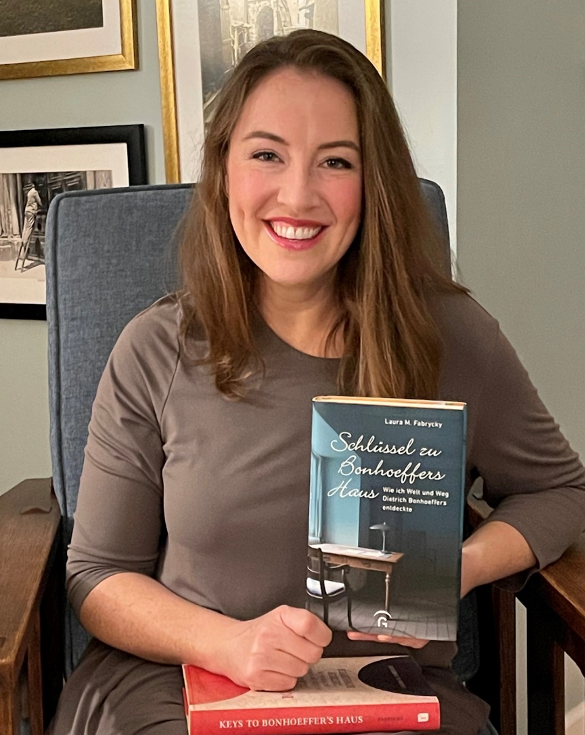
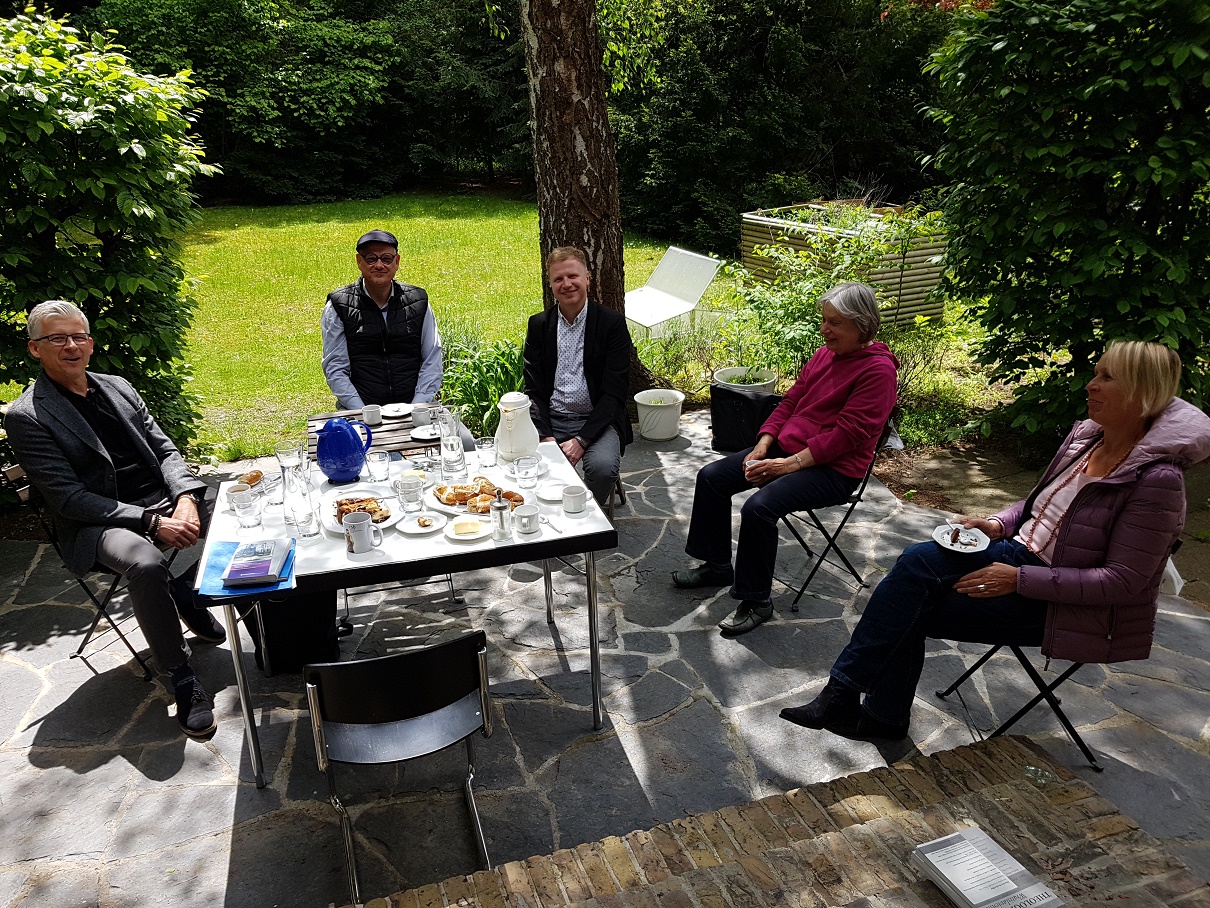
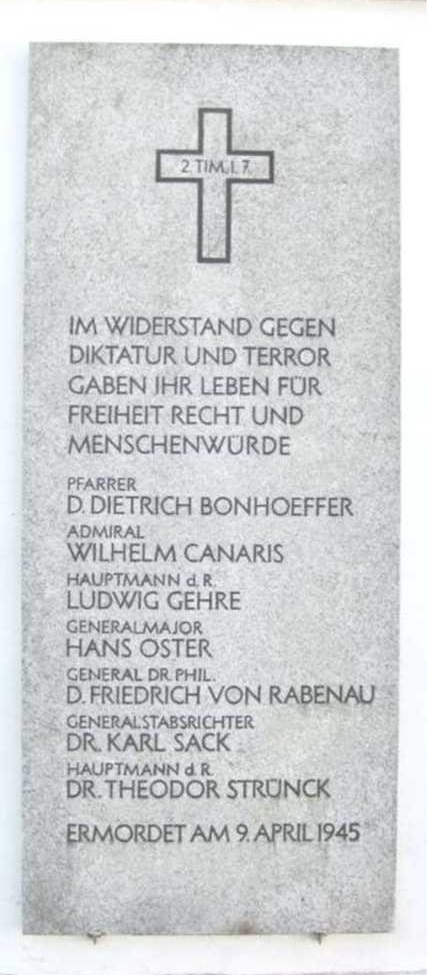 On April 9, 1945, Hans von Dohnanyi was murdered in Sachsenhausen and Dietrich Bonhoeffer in Flossenbürg together with the co-conspirators from the headquarter of the Wehrmacht.
On April 9, 1945, Hans von Dohnanyi was murdered in Sachsenhausen and Dietrich Bonhoeffer in Flossenbürg together with the co-conspirators from the headquarter of the Wehrmacht.